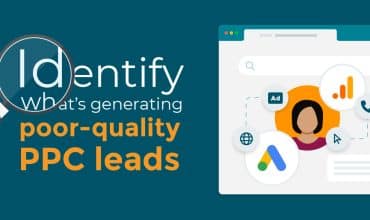How to get customer insights from your online and offline channels
Regardless of industry, sector, agency, or in-house, customer insights are key. What are their pain points, challenges, user journeys? All this information helps you to present them the right information, at the right time, to help secure a prospect or make a sale.
But getting that information can be tricky. For your online channels, you’ll have some marketing analytics tools that can help you glean some information about your prospects, including:
- Number of sessions
- Engagement rate
- Landing page
- Exit page
All this information can add to your understanding about your customers. But there are things you can’t track with standard analytics tools alone.
There are also your offline channels’ results. Are you able to track your activity effectively? If you can, are you using this data to better understand your customers?
What if we said there was a way that you could track your offline channels accurately, and be able to hear from your customers directly, without having to conduct potentially costly market research?
This is where using your inbound calls to add to your marketing analytics can set you above the competition.
Five metrics you’re missing out on with analytics alone
Everyone who works in marketing knows great campaigns are backed by data. An understanding of what performed well (and what didn’t) is crucial to maximising your investments and making the most out of your marketing budgets. But if you’re relying on analytics tools like GA4 or Adobe, there is data you may be missing out on. Including:
- Lead quantity: Software like GA4 can give you some data about your leads. But for service-based businesses, your inbound calls will be key to your success. And tracking those leads will be crucial. If you’re relying on online analytics tools alone, it’s possible that leads from calls will be missed or not tracked properly.
- Lead quality: Knowing how many leads you are driving is one part of the puzzle, but understanding the quality of those leads is key. This is where the leads you can find in GA4 will be potentially misleading and leave you questioning the quality. If you’re running a PPC campaign, you might see the same number of leads in analytics. But, one of those campaigns might have driven more conversions, suggesting higher quality leads. This would be the campaign you would want to invest in, but without having this level of detail you could be optimising your campaigns based on the wrong metrics.
- Your full customer journey: You can use your analytics to gain an in-depth picture about your website, and how your prospects interact with it. You can see where they are landing, what pages are most engaging, and where they exit. But using them in isolation can’t give you the full customer journey once they leave or make a phone call.
- Any offline marketing: QR codes with UTMs have seen a resurgence recently, however these don’t give you the full picture of success. In the same way, if you’re using the same number across your offline marketing, you won’t be able to know what channel or messaging is driving calls.
- Customer insights from conversations: analytics tools can provide you with many insights, but they can’t tell you what your customers are saying and how they are saying it.
If you’re running a PPC campaign, you might see the same number of leads in analytics. But, one of those campaigns might have driven more conversions, suggesting higher quality leads. This would be the campaign you would want to invest in, but without having this level of detail you could be optimising your campaigns based on the wrong metrics.
How to use marketing analytics to get customer insights
There are so many ways you can use your marketing analytics data to understand your customers, particularly when you invest in call tracking. Here’s how…
What your leads can tell you
Understanding your lead quantity, and quality, helps you to optimise the campaigns that are driving traffic, including which of them turn to phone calls that convert. If you aren’t tracking what campaigns are driving actual leads, then you might be investing in channels or messaging that are driving clicks but aren’t converting and therefore wasting spend.
Create campaigns that are relevant and timely
The most successful campaigns are ones that are relevant to your prospects, with the right messaging at the right time. But this can be hard to do with accuracy.
This is where using call tracking and speech analytics comes in. With it you can understand what keywords your prospects are using when they talk to you and can spot upcoming trends and act on them quickly.
Using messaging that resonates
A/B testing isn’t new, marketing teams across B2B and B2C use it regularly to refine their messaging. But unless you’re tracking your calls, you won’t be able to understand which messages are leading to calls that convert. So, you could be putting spend behind a campaign that isn’t driving the leads you want.
By assigning a different number to each online ad you have, you can see what messaging is resonating with your audience at that time and be able to adapt.
Why you should record and analyse your calls
Being able to hear directly from your customers about what they’re interested in is a dream for many marketing teams. And this is where utilising your inbound calls comes in. But for marketing teams that are stretched on budget or resource, this can seem a daunting and timely task.
This is where speech analytics can help. With it you can:
- Get insights into the keywords and questions that are being asked, which you can create content to address on your site.
- Search or scan the automatically produced call transcripts, saving you time on listening or reading every call.
- Scan keywords or phrases that come up time and time again (and convert), so you can assign additional budget to them to help boost your calls further.
- Notice any words that are producing irrelevant enquiries and calls you don’t want and add them to a negative keyword list in Google Ads.
- Segment your calls by their keywords so you can easily see who is calling you and why and adjust if you need to. For example, if certain words result in customer service calls, you can prioritise your organic strategy to include these, and take them out of your paid.
Maximise your customer insights by bringing your online and offline channels together
To truly understand your customers, you can’t rely on marketing analytics tools alone as there are metrics you’ll be missing out on. You need to bring your online and offline channels together in order to maxmise the customer insights you can get. And then use the insights to inform your future marketing activity. This is where tracking your calls could be the key to your success.
Learn more about how the data you hold on your customers contains valuable insights that can guide your marketing strategy and tactics.

Cut wasted marketing ad spend, optimise your budget, and deliver more efficient and effective campaigns with reliable, first-party, data-backed insights.



